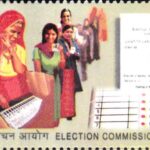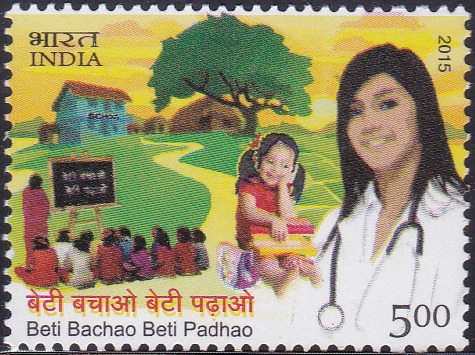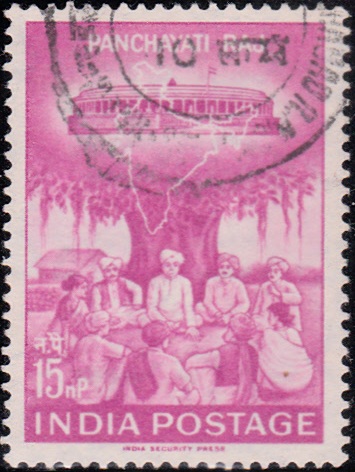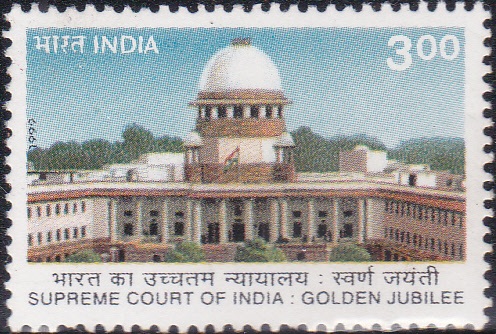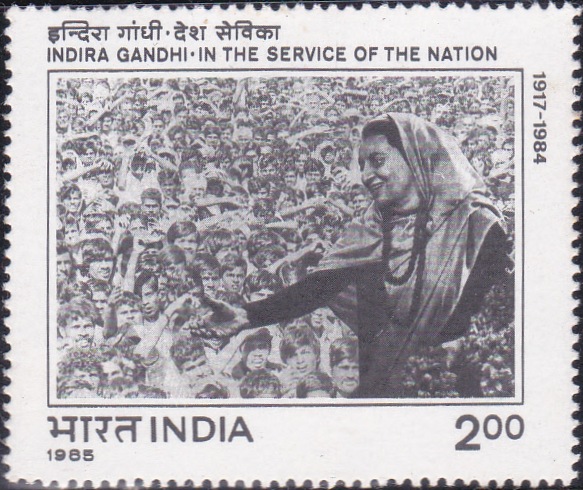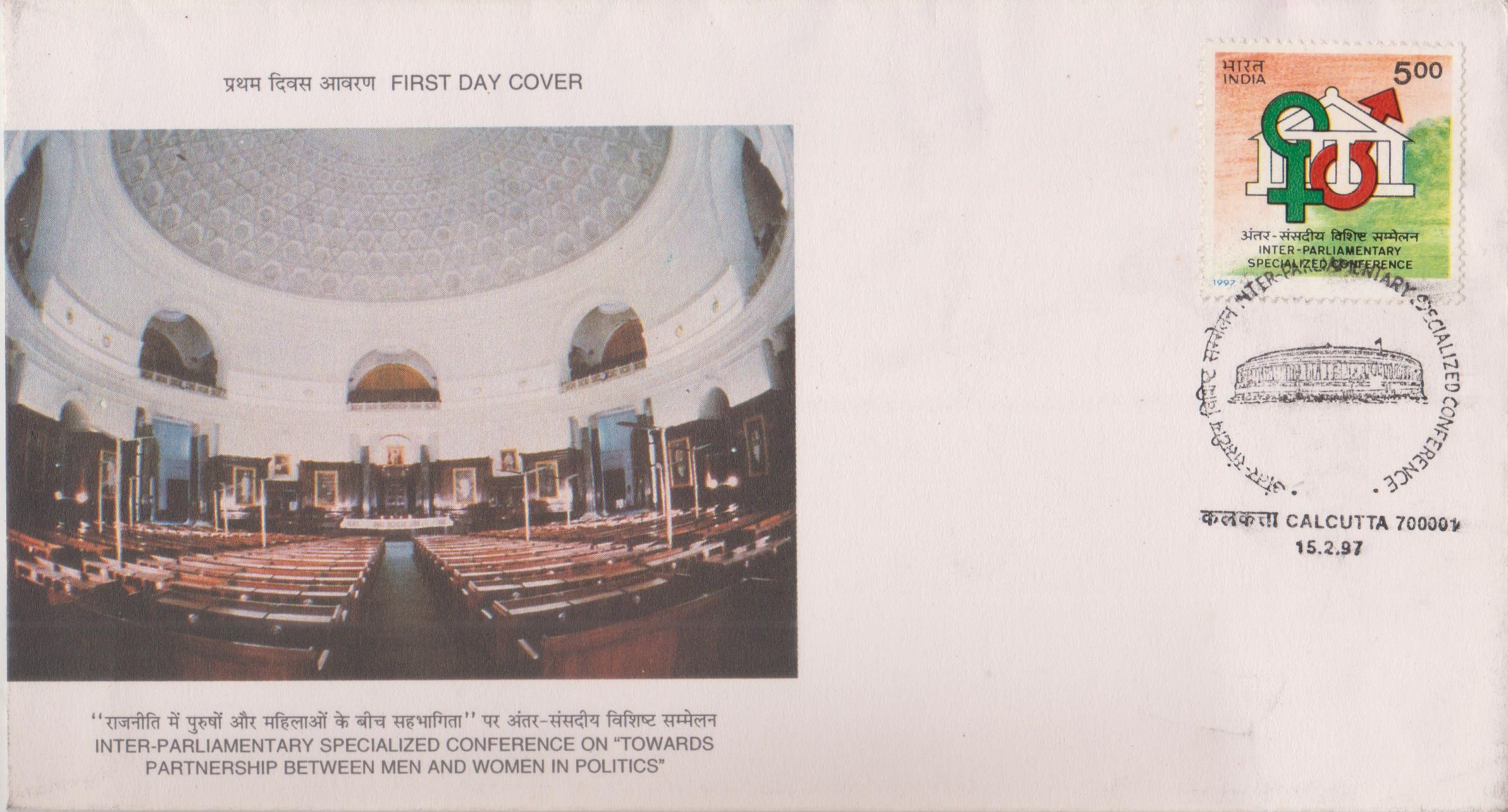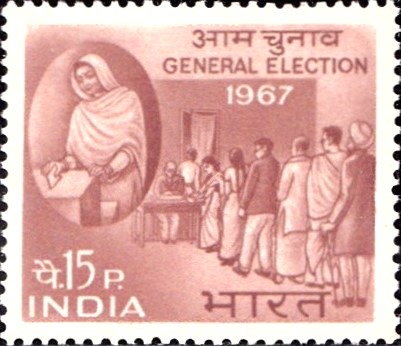
Indian General Election 1967
A commemorative postage stamp on the Indian General Election of 1967, elected 4th Lok Sabha of India :
 Issued by India
Issued by India
Issued on Jan 13, 1967
Issued for : To each and every citizen of the largest democracy in the world the ensuing General Election is indeed a most important event. The Indian Posts & Telegraphs Department has, therefore, decided to highlight the occasion by bringing out a special postage stamp on the 13th January, 1967.
Type : Stamp, Mint Condition
Colour : Red Brown
Denomination : 15 Paisa
Overall Size : 3.34 X 2.88 cms.
Printing Size : 2.99 X 2.52 cms.
Perforation : 14 x 13½
Watermark : Printed on unwatermarked paper
Number Printed : 20,00,000
Number per issue Sheet : 42
Printing Process : Photogravure
Designed and Printed at : India Security Press
About :
- The observance of elective principles in the selection of rulers and kings can be traced back in India almost to the earliest pages of history. There is a reference to this in the epics. Brahmanas refer to popularly chosen rulers and the offices of king-makers (Raja Kartri). Buddhist literature of the 4th century B.C. refers to republics like that of the Lichhavis where the Chief of the State (Senapati) was chosen by election. Voting was known as ‘Chhanda‘ which literally means a ‘wish’. Voting tickets were called ‘Shalakas‘ (pins) and the officers appointed by the assembly to collect voting papers were called ‘Shalaka Grahak‘.
- Though generally republics were absorbed in empires, the chiefs of trade guilds, and of craft associations of urban corporations and village assemblies continued to be elected by the people. Administrative boards and parishads composed of members selected by the respective guilds or associations, persisted in various places for a long time. Village communities continued functioning in some areas e.g. in Maharashtra under the Peshwas up to the 18th century.
- The principle of indirect election was first introduced in 1892, by the British; but popularly elected representatives entered the legislatures only in 1909 – the electorate being very narrow. Although the electorate was gradually widened by the Government of India Acts of 1919 and 1935, the ideal of universal adult suffrage was realised only by the inauguration of the present Constitution in 1950.
- Since then, three general elections have been held in 1952, 1957 and 1962. The general elections being held in 1967 are the fourth. All adult citizens of India will elect representatives from 521 Parliamentary and 3,488 State assembly constituencies in the whole country. An electorate of over 225 million will vote for which more than 250 thousand polling stations will be set up manned by 1.5 million officers. The whole operation took four months in 1952, 20 days in 1957 and 10 days in 1962. This year, the general elections will take less time as they will be from the 15th to the 21st February, 1967.


